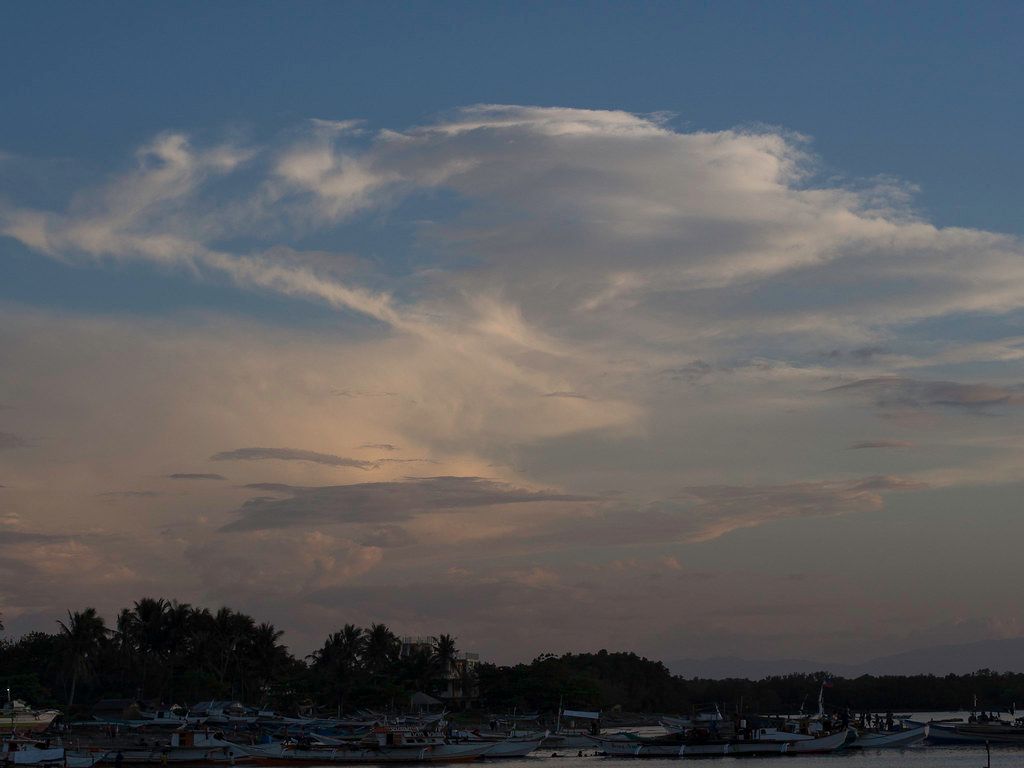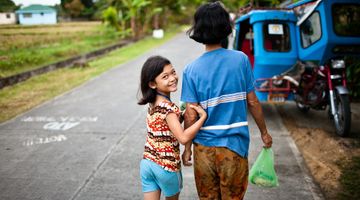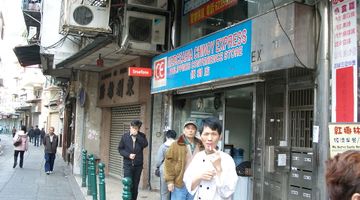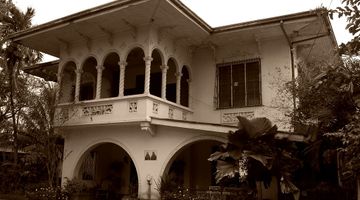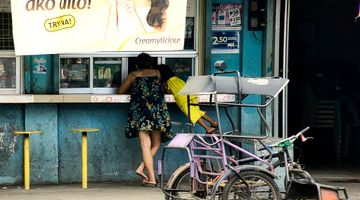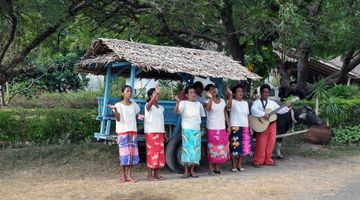Batangas Travel Guide
In a nutshell
Located approximately 2 to 3 hours from Manila, Batangas is a cornucopia of natural wonders, historical and religious sites, and gastronomic treats.
Why go to Batangas
There's something for everyone here. Whether you prefer the luxury lifestyle or you're the adventurous type, you'll never run out of things to do and places to see.
For starters, you can spend a good chunk of your day strolling around the heritage town in Taal to see well-preserved ancestral houses. Many of these have now been turned into galleries, museums, guesthouses, and souvenir shops.
Nourish your spiritual thirst by going on a pilgrimage tour. The province has a good number of churches that showcases the enduring faith of the Filipino people as well as the splendour of religious architecture.
Fancy roughing it up and spend a night on top of a mountain? It can be done and you have a choice of at least 5 summits. There are romantic lighthouses, great dive spots, picturesque beaches, health retreats, water parks.
You name it, Batangas has it. There are plenty of well-developed tourist attractions but you're also bound to discover hidden gems tucked away in some of its more bucolic corners. And last but definitely not least, the food that awaits you here is the stuff culinary dreams are made of. Make sure to get heavy doses of kapeng barako (locally grown coffee variant) as you'll surely want more hours in a day to be able to do everything.
When to go to Batangas
While Batangas is a year-round destination, it is still best to go during the dry season. Even if it doesn't rain the entire day, a gloomy weather and a moist environment can surely put a damper on your holiday. Time your visit during the months of September to December or January to May. If you're coming around the Holy Week or the peak of summer, be prepared. Expect droves of tourists, longer travel time due to horrendous traffic, and fully booked resorts.
Where to stay in Batangas
While there are no backpacker districts here, it is possible to pitch a tent on a secluded beach or on top of a mountain. Before you do so, make sure to check with the locals if it’s allowed and if you need a special permit.
Keep in mind though that uninhabited islands such as Fortune Island have no electricity, no running water, no toilets, and no amenities and facilities. Bring the essentials and enjoy nature at its best.
That being said, families and weekend warriors will not have a problem finding accommodation in Batangas. One thing that you will have to consider when choosing your base though is your itinerary. Batangas is huge and where you stay will largely dictate your activities. If you wish to be near beaches for some swimming, diving, or other water activities, check out resorts in Anilao, Calatagan, Nasugbu, Lobo, San Juan, Lian, Tingloy, or Bauan. Inland towns like Lipa or Taal is great for cultural explorations.
Most budget hotels cost around PHP1000 to PHP1500 per night while luxury accommodations run the gamut of exclusive beach resorts, farm style retreats, and health and wellness spas. These can easily cost upwards of PHP10000 to PHP20000. No worries though as there are a lot of other options in between.
Where to eat in Batangas
Besides inspiring nature trips and heart-pounding outdoor adventures, there's one more thing that makes Batangas a memorable destination – a wide gastronomic variety.
Blessed with coastal villages and acres of farmlands, you can bet there's an endless supply of premium meat and seafood. From roadside food stalls, farm-to-table restaurants, and air-conditioned malls, expect savoury fish and meat based dishes – boiled, stewed, and grilled.
During your visit, make sure not to miss out the food that is unique to this province. First and foremost, hunt for a bulalo joint along the highway of Sto. Tomas and try a hearty bowl of their signature beef marrow stew.
Next, look for lomi houses which you'll find in practically every municipality in the province. Their version of this noodle dish is thicker with lots of meaty toppings and crunchy chicharon.
For breakfast, the perfect viand to go along with that fried rice is tapang Taal (jerked pork) or longganisang taal – two of Taal, Batanga’s culinary claim to fame.
The other two must-tries are maliputo and tawilis – rare fishes that can only be found in Taal Lake. Maliputo is expensive but people say sinigang na Maliputo (cooked in vegetables and tamarind-flavored broth) alone is worth the trip to Taal. Deep fried tawilis meanwhile is best eaten with green mangoes and bagoong Balayan (anchovies).
Other notable Batangueño dishes to try are goto (rice porridge), smoked tinapa in Lemery, kalderetang kambing (goat meat stew), sinaing na tulingan (bullet scad cooked in tamarind juice or kamias), and adobong dilaw (yellow adobo).
How to get around Batangas
For shorter trips between villages or around town, take a tricycle. Minimum fare is PHP20 and it can only carry about 3 passengers.
If heading to another town, ride a jeepney. It can accommodate up to 18 people and you can rent it for a special trip. Flag it down on the street or go to the jeepney terminal. Minimum fare is around PHP8. The only downside of taking a jeepney is you will have to wait until it’s full before it leaves for your destination. Travel time would be hard to peg since it will drop off and pick up passengers along the way.
FX operates in the same manner but it’s an air-conditioned vehicle so it tends to cost a bit more.
You can also ride a bus but they're few and far between. A banca or a small boat is another popular mode of transportation if you're going island hopping. If going to Masasa beach for example, you can arrange for a private boat ride or catch a passenger boat in the ports of Mabini or Tingloy.
How to get to and from Batangas
Batangas sits approximately 2-3 hours away from Ninoy Aquino International Airport in Manila. If you are a proficient driver, you can check out car hire services at the airport. Many car rental companies have desks located in terminal 1, terminal 2, terminal 3 or in Park’n’Fly Building with rates starting at approximately PHP2,000 per day. These are Viajero Rent-a-Car, Avis Car Rental, Budget, Hertz, National, Europcar and Nissan Rent A Car. Be warned though that traffic rules here can be very strange so if you've never driven here before, opt for chauffeur-driven rather than self-driven service.
If you're on a budget, there are many bus companies that ply the Batangas route on a daily basis. JAM Liner has a bus terminal located in Buendia and Cubao. Tritran's terminal can be found in Pasay while Batangas Express Liner in situated in Lawton, ALPS Bus Company has bus stations in Cubao, EDSA, and Alabang and RRCG in Pasay. Depending on which part of Batangas you're going, fare varies from around PHP130 to PHP190.
Alternatively, you can ride an FX which might be a quicker option than buses. FX terminals for Batangas-bound vehicles are located in Buendia, Cubao, Alabang, and Crossing Mandaluyong.
Lastly, most people coming from neighbouring islands such as Romblon and Mindoro access the province via its international sea port – International Port of Batangas. Check the websites of ferry companies such as Fastcat , Oceanjet, Supercat , and Starlight Ferries for updated schedule.
Calapan to Batangas ticket should cost around PHP200 to PHP300. Travel time is just around an hour. Romblon to Batangas journey will take roughly 7- 8 hours with fare starting at PHP850 via 2Go Travel. Other popular shipping lines calling to Batangas are Navios Shipping Line and Montenegro Shipping Lines.
Is Batangas a safe place to visit?
Batangas is just as safe as any other province in the Philippines with the exception of course of Western Mindanao and Sulu Islands. People are very welcoming and trustworthy. There hasn't been any news of violence involving tourists that we've heard of. If you're going to do some diving though, we suggest getting a travel insurance.

